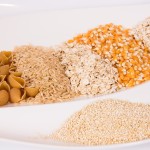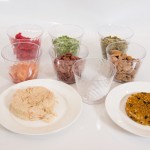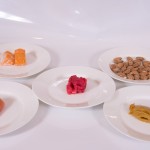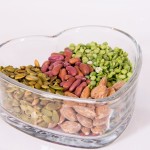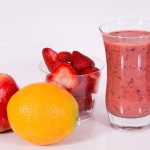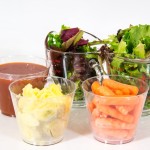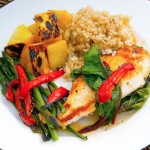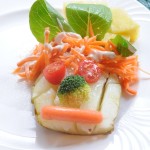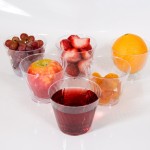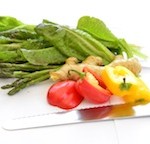Here is a sample gallery of our best MyPlate images. Use them in your blog or other project. You can link to them directly or download for your site – just link back to this page and indicate they are copyrighted by Food and Health Communications, Inc. Click contact us below to make inquiries, comments or requests. We love to hear from you!!
If you are looking for more healthy food photos, check out our new photo store: http://healthyfoodphotos.com
7 fun lessons were learned about MyPlate and its food groups during our photography project:
- LOTS of choices are given for each food group.
- For vegetables you can have whole, chopped, cooked, frozen, canned, dried, raw, mashed or leafy.
- For fruits you can have whole, chopped, cooked, frozen or pureed. 100% juice counts, too.
- Protein lists meat, poultry, seafood, soy alternatives, nuts, seeds, nut butters and eggs.
- And milk specifies fluid milk, dairy desserts, yogurt, hard cheese and processed cheese.
- Grain choices are very delicious: wheat, oats, corn, barley, rice and others. Quinoa is a great “other” that cooks quickly and looks like cous cous on a plate.
- The serving sizes are easy to follow but they don’t always match what manufacturers put in packages and on food labels.
- For example, 1 cup of yogurt is a serving but most containers of yogurt are only 5 to 6 ounces. Some of them contain a significant amount of sugar so if you double them to get to a cup, you might eat too many calories. It is better to buy plain yogurt and add real fruit
- It takes 3 slices of processed cheese to make 2 ounces. We always thought it was 2.
- It takes 2 slices of hard cheese to make 1.5 ounces.
- Some protein items weigh close to 5 ounces so you would not get variety if you ate one of them as your daily requirement. A full sized chicken breast or steak will often weigh more than 5 ounces if eaten as packaged. Save money and cut them up! We love our photo showing one serving of each type of protein. It looks like a tapas bar.
- Peanut butter jars list 2 tablespoons but you only need 1 to make a serving for the MyPlate protein group recommendations.
- 5 ounces of protein doesn’t look like much. It is the amount recommended for one day for most people. If you weigh an ounce of meat, fish or poultry on a scale it is about the size of a big gum ball. 3 ounces is about the size of a smart phone (who uses a deck of cards anymore anyway?) and one ounce of nuts covers a bread and butter plate.
- The whole grains are really beautiful when you assemble them side by side. The photo above can be used for a fun guessing game and lesson about grains.
- The dairy group specifically says that butter, cream and cream cheese are not considered a dairy serving because they don’t have a lot of calcium. We note that whipped cream in the can is a great accompaniment to fruit instead of ice cream. Although frozen desserts are allowed in the calcium group. You can’t get too excited too quickly about that, though, because deeper in the recommendations you will find that discretionary calories for most people are around 100 to 150 calories which is just about a half cup of ice cream and all added sugars must be fit into that amount.
- Soy milk is now allowed but the market is zooming faster than the USDA can keep up with it. You can also use calcium fortified almond milk, rice milk or flax milk and get the same nutrients. The alternative milks are not as high in protein although they are often lower in calories, sugar and sodium. And they are higher in calcium and B12.
- Don’t be afraid to play with your food! This “make half the plate fruits and veggies” photo is our favorite:
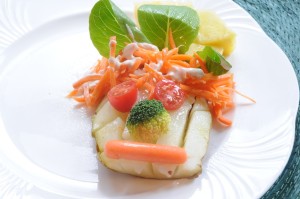
These photos are being used in a new upcoming video and a current CD.
If you are looking for more healthy food photos, check out our new photo store: http://healthyfoodphotos.com




